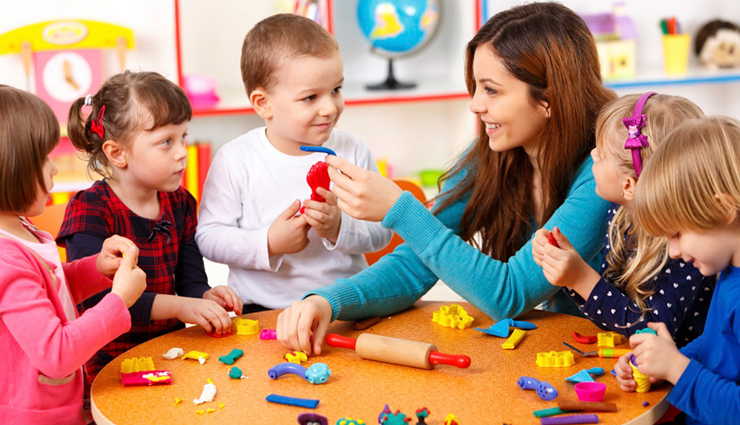- Home›
- Mates & Me›
- 5 Tips To Keep Your Child Busy In Play Based Learning
5 Tips To Keep Your Child Busy In Play Based Learning
By: Kratika Sat, 10 Dec 2022 3:59:54

We all know the importance of playing and learning in early childhood education.
Research has also shown plenty of benefits when children play.
Through play, children pick up several developmental skills such as communication, social skills, cognitive, critical thinking and motor skills. Creative thinking is fostered while children play.
“Scientists have recently determined that it takes approximately 400 repetitions to create a new synapse in the brain – unless it is done with play, in which case, it takes between 10 and 20 repetitions!"

# Satisfy their basic needs and fill up their emotional tank.
Your child cannot be engaged and learn if they are feeling hungry, tired or uncomfortable. They also will not be actively involved if they don't feel loved or that they belong.
Before conducting the activities, make sure that your child is well-rested and well-fed. You might want to first spend some quality time by reading a book or talking about their day. This is especially important when your child hasn’t seen you for the whole day! Make them feel loved before attempting to get any learning done.
# Focus on your child: curate activities based on their interests.
My girl was suddenly keen on caterpillars, so she willingly completed an activity that required her to create a "caterpillar" with dot stickers while learning mathematics and letters of the alphabet! If I had drawn them in simple square boxes, I don’t think she could even last 10 seconds!
A dear friend shared that her girl could only last three seconds with dot stickers. My solution: create a different context based on her girl’s interest!

# Focus on your child: curate activities based on their learning styles
Is your child an auditory, kinesthetic or visual learner?
If they enjoy music, they likely need some songs to go along with the activities. For example, you can sing “Wheels on the bus” while they are trying to match wheels of the same colours.
Visual learners enjoy charts and diagrams, so you might like to draw along as they play. Think about book-based activities that draw reference to pictures and images in the books.
Most children are kinesthetic learners, so do incorporate some movement in their play activities! For example, I make the kids run around the house and search for post-its as they learn new Chinese characters.
# Know your child's temperament
Temperament refers to your child’s inborn personality. Every child is different, so there is no need to compare your child to another kid!
Think about the temperament of your child: Are they highly active? You might want to reduce the duration of "seat-work", or the time they have to be seated for an activity.
Are they highly distractible? You might want to take away the other play items when you are trying to engage them in a specific activity.
# Level of difficulty
It is important that the play activities you prepare are not so simple such that your kids find them boring. They cannot be too challenging either or your kids may not even try them.
My girl can match colours, so I introduced patterns to her instead. My son knows his skip counting by 2s and 5s very well, so I included skip counting by 3s to challenge him a little.





